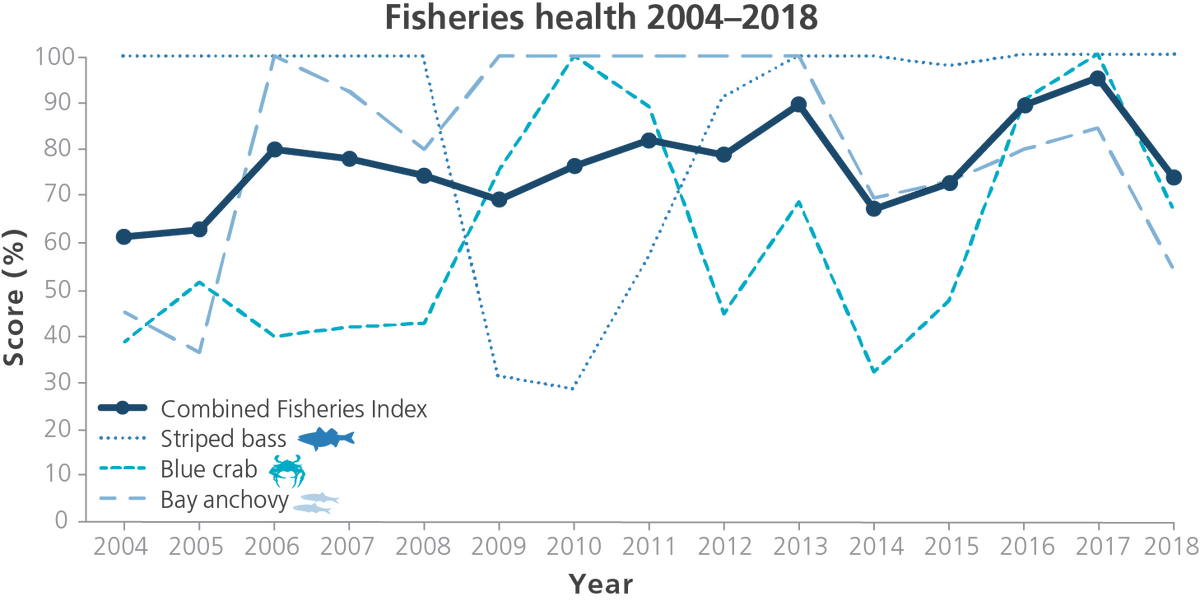All indicator scores decreased or remained the same in 2018 and the overall Chesapeake Bay health score decreased from 54% to 46%, which is a C. Despite the decrease in score, overall bay health is still significantly improving over time.
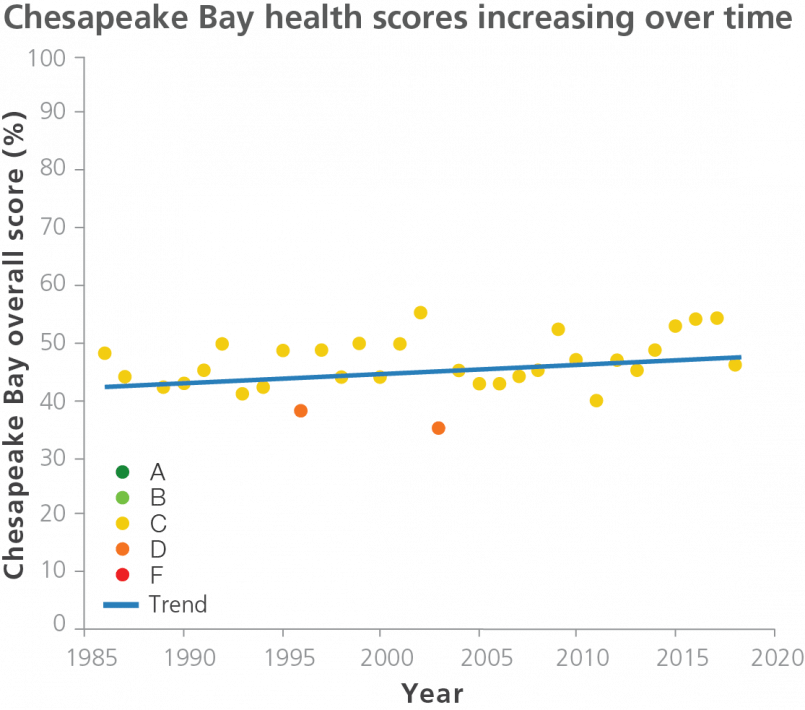
Bay-wide, dissolved oxygen scored 85% in 2018. Water clarity scored 7%, a decrease from last year’s 17%. The benthic community score decreased from a 60% to a 59%. Total nitrogen scored 44%, a decline from last year’s 59%. Total phosphorus scored 72%, declining from a 76% in 2017. Chlorophyll a scored 22%, a decrease from 35% in 2017. Aquatic grasses scored 36%, a decline from last year’s 44%.
Despite declines in 2018, total phosphorus, total nitrogen, dissolved oxygen, and aquatic grasses have significantly improving trends over time. Water clarity and chlorophyll a have significantly declining trends. Benthic community shows no significant change in health over time.
Of the many factors that affect Chesapeake Bay health, the extreme precipitation seen in 2018 appears to have had the biggest impact. The Baltimore area received 72 inches of rain in 2018, which is 175% above the normal of 42 inches. Climate change causes increased variability in rainfall with extreme wet and dry conditions in different regions. These extremes will continue to put pressure on the entire Chesapeake Bay watershed.
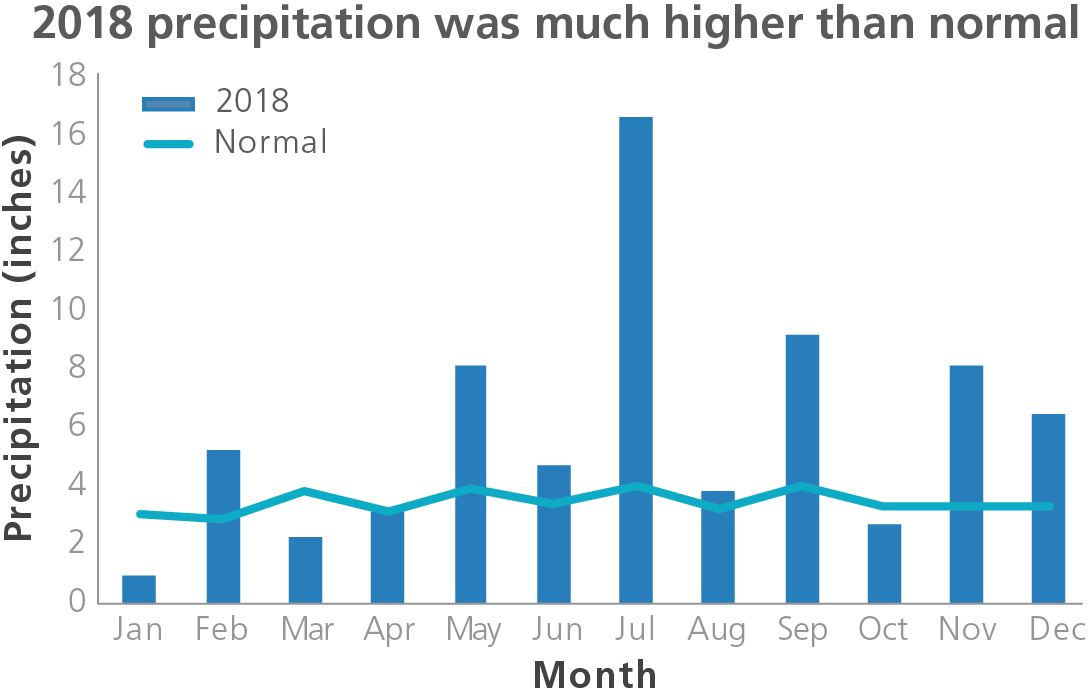
The long-term trajectory of bay health is still positive, even with the impacts of precipitation on the Bay in 2018. Even so, restoration efforts are needed to continue to reduce nutrient and sediment pollution in Chesapeake Bay, especially in light of increased precipitation extremes from climate change.
Expanding into the Chesapeake Bay Watershed
Including watershed indicators in the Chesapeake Bay & Watershed Report Card is an exciting addition that will occur over the next few years. Water quality and biotic indicators for watershed health will be added, as well as indicators that reflect sustainable fisheries, engaged communities, and other socioeconomic issues outlined in the Chesapeake Bay Agreement.
Nitrogen and phosphorus are important indicators for assessing watershed health. The maps show preliminary results of water quality analyses for these indicators. These indicators were measured in each of the colored portions of the watershed (see maps below). There are more data available for these watershed indicators and those data will be incorporated in future report cards.

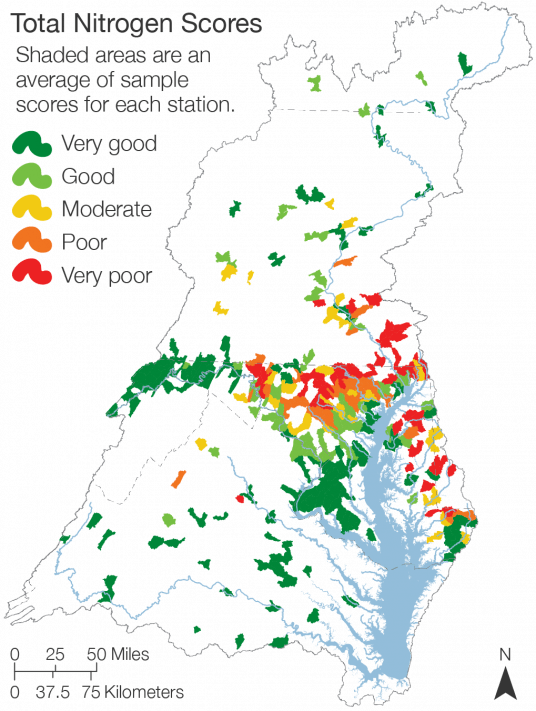
This preliminary analysis shows that total nitrogen generally had better scores in rural areas and poor scores in more urban areas, such as the greater Baltimore area. Total phosphorus scores were varied, with poor health in southeastern Pennsylvania along the Susquehanna River.
In future versions of this report card these and other indicators will be combined to determine a Chesapeake Bay watershed health score.
Watershed health and the benthic community
The community of small animals that live in the sediments and under rocks at the bottom of streams and rivers like snails, mussels, and insects are known as benthic macroinvertebrates. These organisms are good indicators of stream health because they are sensitive to pollutants, such as nutrients and sediments. Benthic community health is threatened by pollution from agriculture, stormwater, mining, combustion or fossil fuels, and wastewater treatment facilities.
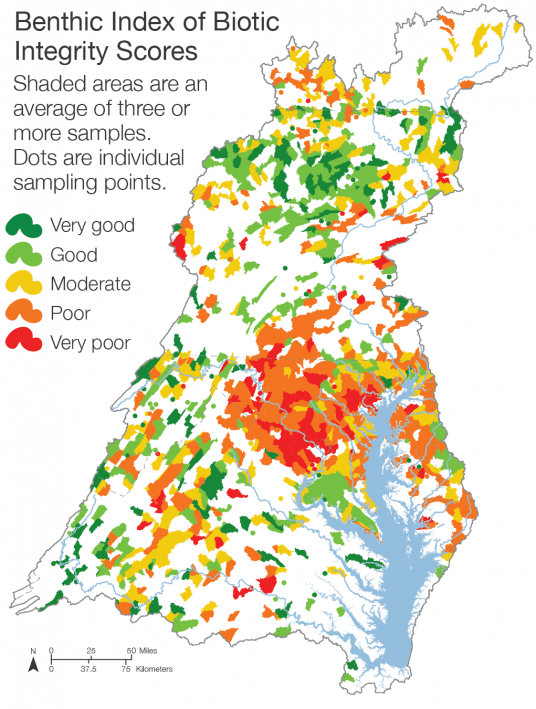
This map shows the results of a Benthic Index of Biotic Integrity that scores regions and sites in the watershed based on how healthy the benthic macroinvertebrates are in that area. Circles are individual sampling points, whereas the shaded regions have three or more samples. All data are from 2006–2011. Benthic health is poor or very poor around urban and suburban areas, poor and fair around agriculture areas, and good to excellent in forested areas.
Fish populations decline in 2018
In 2018, the Fisheries Index scored 74%.
In 2018, striped bass numbers sharply declined. However, the striped bass score held steady with a 100% score because it is based on 2016–2018 data.
Both blue crab and bay anchovy scores declined. In 2018, blue crab scored 68% and bay anchovy scored 55%.
These drops in scores are a cause for concern as smaller populations could lead to less recruitment and further declines in the future.
